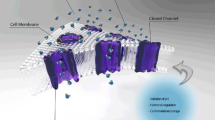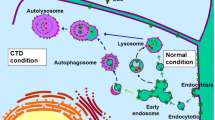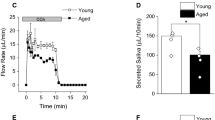Abstract
Aquaporins (AQP) are a family of channel proteins expressed in the cell membranes of many tissue types. As water channels, they enable the selective permeation of water molecules and thus play an important role in water transport through the plasma membrane. There are numerous AQP sub-types, among which AQP5 is expressed in the salivary glands. The expression and localization of AQP5 in different salivary gland cells of animal models during fetal development and after birth have enabled the physiological functions of AQP5 to be elucidated, but subsequent changes in the adult phase are unknown. It is known that saliva production tends to decrease with age, but it is unclear how AQP5 activity and function changes developmentally, from young to old including gender differences. In the present study, we sampled the parotid, submandibular, and sublingual glands from young (8 weeks old) and aged (12 months old) mice of both sexes to study the effects of age- and sex-related differences in AQP5 expression. Positive fluorescence immunostaining was detected in the membranes of cells from all gland types, and this was enhanced in juvenile mice from both sexes. Western blot analyses revealed that AQP5 expression levels tended to decrease with age in both male and female animals. Conversely, AQP5 gene expression levels did not change significantly with aging, but were found to be high in submandibular gland cells of both sexes, in parotid gland cells of older female mice, and in the sublingual gland cells of young male mice.






Similar content being viewed by others
References
Aure MH, Ruus AK, Galtung HK (2014) Aquaporins in the adult mouse submandibular and sublingual salivary glands. J Mol Histol 45:69–80. https://doi.org/10.1007/s10735-013-9526-3
Ben-Aryeh H, Miron D, Szargel R, Gutman D (1984) Whole- saliva secretion rates in old and young healthy subjects. J Dent Res 63:1147–1148. https://doi.org/10.1177/00220345840630091001
Benga G (2009) Water channel proteins (later called aquaporins) and relatives: past, present, and future. IUBMB Life 61:112–133. https://doi.org/10.1002/iub.156
Bouma HR, Bootsma H, Nimwegen JF, Haacke EA, Spijkervet FK, Vissink A, Kroese FGM (2015) Aging and immunopathology in primary Sjögren’s syndrome. Curr Aging Sci 8:202–213. https://doi.org/10.2174/1874609808666150727112826
Carpenter G (2013) The secretion, components, and properties of saliva. Annu. Rev Food Sci Technol 4:267–276. https://doi.org/10.1146/annurev-food-030212-182700
Delporte C (2014) Aquaporins in salivary glands and pancreas. Biochim Biophys Acta Bba-Gen Subj 1840:1524–1532. https://doi.org/10.1016/j.bbagen.2013.08.007
Delporte C, Bryla A, Perret J (2016) Aquaporines in salivary glands: from basic reaerch to clinical applocations. Int J Mol Sci 17:166–178. https://doi.org/10.3390/ijms17020166
Delporte C, Steinfeld S (2006) Distribution and roles of aquaporins in salivary glands. Biochim Biophys Acta 1758:1061–1070. https://doi.org/10.1016/j.bbamem.2006.01.022
Gresz V, Kwon TH, Hurley PT, Varga G, Zelles T, Nielsen S, Case RM, Steward MC (2001) Identification and localization of aquaporin water channels in human salivary glands. Am J Physiol Gastrointest Liver Physiol 281:G247-254. https://doi.org/10.1152/ajpgi.2001.281.1.G247
Heintze U, Birkhed D, Bjorn H (1983) Secretion rate and buffer effect resting and stimulated whole saliva as a function of age and sex. Swed Dent J 7:227–238
Hori M, Nakamachi T, Rakwal R, Shibato K, Nakamura Y, Wada D, Tsuchikawa A, Yoshikawa K, Tamaki SS (2012a) Unraveling the ischemic brain transcriptome in a permanent middle cerebral artery occlusion model by DNA microarray analysis. Dis Model Mech 5:270–283. https://doi.org/10.1242/dmm.008276
Hori M, Nakamachi T, Rakwal R, Shibato J, Ogawa T, Aiuchi T, Tsuruyama T, Tamaki K, Shioda S (2012b) Transcriptomics and proteomics analyses of the PACAP38 influenced ischemic brain in permanent middle cerebral artery occlusion model mice. J Neuroinflammation 9:256. https://doi.org/10.1186/1742-2094-9-256
Hori M, Nakamachi T, Rakwal R, Shibato J, Ogawa T, Aiuchi T, Tsuruyama T, Tamaki K, Shioda S (2013) CORRECTION: Transcriptomics and proteomics analyses of the PACAP38 influenced ischemic brain in permanent middle cerebral artery occlusion model mice. J Neuroinflammation 10:18. https://doi.org/10.1186/1742-2094-10-18
Hori M, Nakamachi T, Shibato J, Rakwal R, Tsuchida M, Shioda S, Numazawa S (2014) PACAP38 differentially effects genes and CRMP2 protein expression in ischemic core and penumbra regions of permanent middle cerebral artery occlusion model mice brain. Int J Mol Sci 15:17014–17034. https://doi.org/10.3390/ijms150917014
Hosoi K (2016) Physiological role of aquaporin 5 in salivary glands. Pflugers Arch 468:519–539. https://doi.org/10.1007/s00424-015-1749-6
Hosoi K, Yao C, Hasegawa T, Yoshimura H, Akamatsu T (2020) Dynamics of salivary gland AQP5 under normal and pathologic conditions. Int J Mol Sci 21:1182. https://doi.org/10.3390/ijms21041182
Ichiyama T, Nakatani E, Tatsumi K, Hideshima K, Urano T, Nariai Y, Sekine J (2018) Expression of aquaporin 3 and 5 as a potential marker for distinguishing dry mouth from Sjögren’s syndrome. J Oral Sci 60:212–220. https://doi.org/10.2334/josnusd.17-0150
Inoue N, Lida H, Yuan Z, Ishikawa Y, Ishida H (2003) Age-related decreases in the response of aquaporin-5 to acetylcholine in rat parotid glands. J Dent Res 82:476–480. https://doi.org/10.1177/154405910308200614
Kawedia JD, Nieman ML, Boivin GP, Melvin JE, Kikuchi K, Hand AR, Lorenz JN, Menon AG (2007) Interaction between transcellular and paracellular water transport pathways through aquaporin 5 and the tight junction complex. Proc Natl Acad Sci USA 104:3621–3626. https://doi.org/10.1073/pnas.0608384104
Krane CM, Melvin JE, Nguyen HV, Richardson L, Towne JE, Doetschman T, Menon AG (2001) Salivary acinar cells from aquaporin 5-deficient mice have decreased membrane water permeability and altered cell volume regulation. J Biol Chem 276:23413–23420. https://doi.org/10.1074/jbc.M008760200
Larsen HS, Aure MH, Petrers SB, Larsen M, Messelt EB, Galtung HK (2011) Localization of AQP5 during development of mouse submandibular salivary gland. J Mol Histol 42:71–81. https://doi.org/10.1007/s10735-010-9308-0
Larsen HS, Ruus AK, Galtung HK (2009) Aquaporin expression patterns in the developing mouse salivary gland. Eur J Oral Sci 117:655–662. https://doi.org/10.1111/j.1600-0722.2009.00695.x
Ma T, Song Y, Gillespie A, Carlson EJ, Epstein CJ, Verkman AS (1999) Defective secretion of saliva in transgenic mice lacking aquaporin-5 water channels. J Biol Chem 274:20071–20074. https://doi.org/10.1074/jbc.274.29.20071
Masuo Y, Hirano M, Shibato J, Nam HW, Fournier I, Celine M, Wisztorski M, Salzet M, Soya H, Agrawal GK, Ogawa T, Shioda S, Rakwal R (2011) Sample preparation in biological mass spectrometry. In: Ivanov A, Lazarev A (ed) Brain proteomics: sampling preparation techniques for the analysis of rat brain samples using mass spectrometry; Netherlands: Springer, Berlin Heidelberg New York, pp 171–195
Masuo Y, Shibato J, Rakwal R (2012) ADHD animal model characterization: a transcriptomics and proteomics analysis. Methods Mol Biol 829:50–530. https://doi.org/10.1007/978-1-61779-458-2_32
Matsuzaki T, Tajika Y, Ablimit A, Aoki HH, Takata K (2004) Aquaporins in the digestive system. Med Electron Microsc 37:71–80. https://doi.org/10.1007/s00795-004-0246-3
Matoba Y, Nonaka N, Takagi Y, Imamura E, Narukawa M, Nakamachi T, Shioda S, Banks WA, Nakamura M (2016) Pituitary adenylate cyclase-activating polypeptide enhances saliva secretion via direct binding to PACAP receptors of major salivary glands in mice. Anat Rec (hoboken) 299:1293–1299. https://doi.org/10.1002/ar.23388
Nakamachi T, Ohtaki H, Seki T, Yofu S, Kagami N, Hashimoto H, Shintani N, Baba A, Mark L, Lanekoff I, Kiss P, Farkas J, Reglodi D, Shioda S (2016) PACAP suppresses dry eye signs by stimulating tear secretion. Nat Commun. 12034. https://doi.org/10.1038/ncomms12034
Pan Y, Iwata F, Wang D, Muraguchi M, Ooga K, Ohmoto Y, Takai M, Cho G, Kang J, Shono M, Li X, Okamura K, Mori T, Ishikawa Y (2009) Identification of aquaporin-5 and lipid rafts in human resting saliva and their release into cevimeline-stimulated saliva. Biochim Biophys Acta 1790:49–56. https://doi.org/10.1016/j.bbagen.2008.08.009
Sapmaz E, Uysal M, Tumer MK, Sapmaz HI, Somuk BT, Arici A, Tas U (2016) Investigation of age-related changes in the expression of aquaporin-1 and aquaporin-5 in the salivary glands of mice. Acta Otolaryngol 136:937–943. https://doi.org/10.3109/00016489.2016.1165353
Sasaki S, Watanabe J, Ohtaki H, Matsumoto M, Murai N, Nakamachi T, Hannibal J, Fahrenkrug J, Hashimoto H, Watanabe H, Sueki H, Honda K, Miyazaki A, Shioda S (2017) Pituitary adenylate cyclase-activating polypeptide promotes eccrine gland sweat secretion. Br J Dermatol 176:413–422. https://doi.org/10.1111/bjd.14885
Steinfeld S, Cogan E, King LS, Agre P, Kiss R, Delporte C (2001) Abnormal distribution of aquaporin-5 water channel protein in salivary glands from Sjögren’s syndrome patients. Lab Invest 81:143–148. https://doi.org/10.1038/labinvest.3780221
Takata K, Matsuzaki T, Tajika Y (2004) Aquaporins: water channel proteins of the cell membrane. Prog Histochem Cytochem 39:1–83. https://doi.org/10.1016/j.proghi.2004.03.001
Funding
This study was supported in part by JSPS KAKENHI Numbers 16OH2684 and 18OH5386.
Author information
Authors and Affiliations
Corresponding author
Ethics declarations
Ethical approval
The experimental protocols described here were reviewed and approved by the Animal Care Committee of Showa University (#12016, #13037).
Informed consent
Not Application.
Competing interest
The authors declare no competing interests.
Additional information
Publisher's Note
Springer Nature remains neutral with regard to jurisdictional claims in published maps and institutional affiliations.
Supplementary Information
Below is the link to the electronic supplementary material.
Supplementary file1 (MP4 13958 KB)
Supplementary file2 (MP4 6736 KB)
Rights and permissions
Springer Nature or its licensor (e.g. a society or other partner) holds exclusive rights to this article under a publishing agreement with the author(s) or other rightsholder(s); author self-archiving of the accepted manuscript version of this article is solely governed by the terms of such publishing agreement and applicable law.
About this article
Cite this article
Matsuyama, K., Fujikawa, K., Matsuki-Fukushima, M. et al. Ontogenetic development of the water channel protein AQP5 in mouse salivary gland tissue. Cell Tissue Res 392, 705–714 (2023). https://doi.org/10.1007/s00441-023-03762-w
Received:
Accepted:
Published:
Issue Date:
DOI: https://doi.org/10.1007/s00441-023-03762-w




